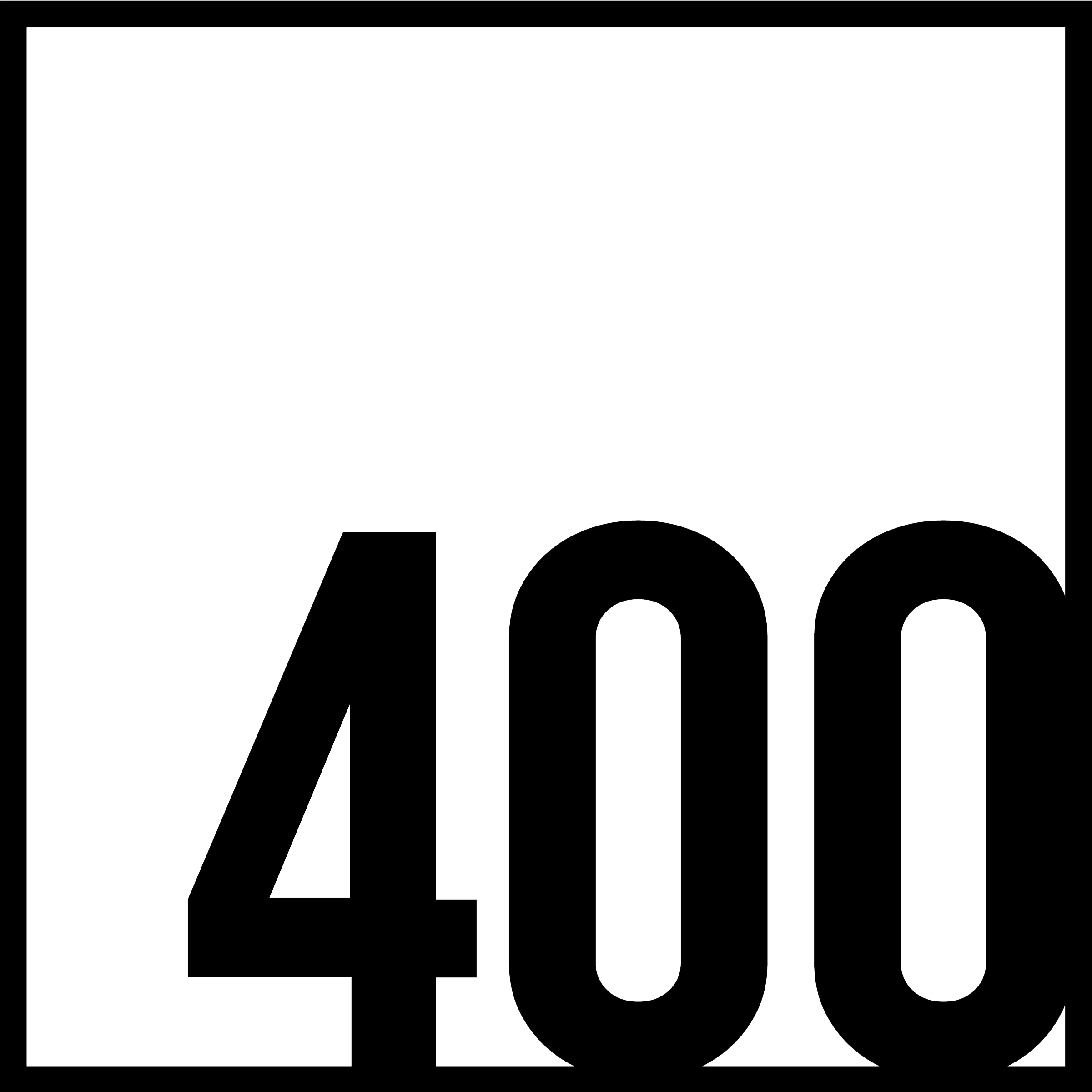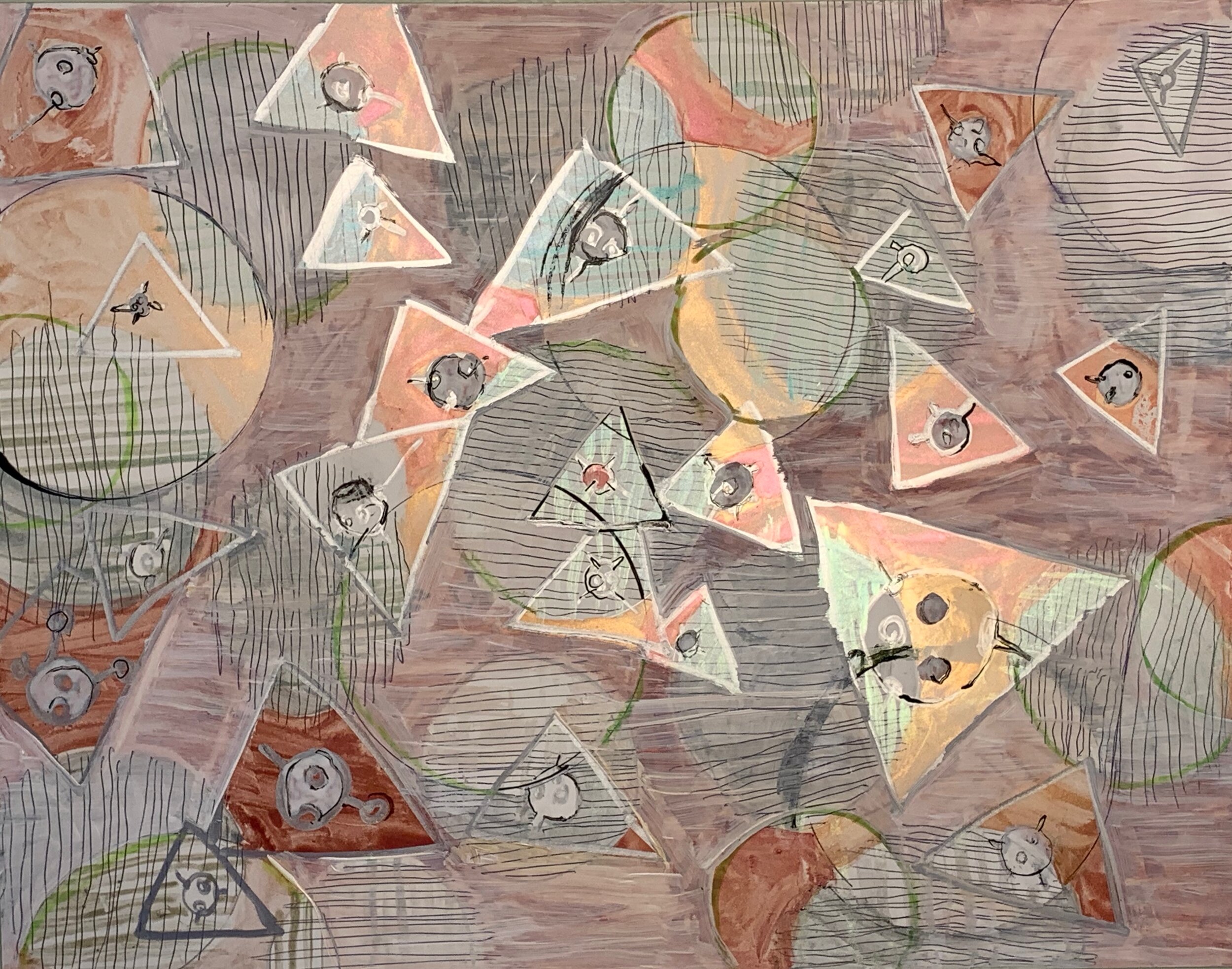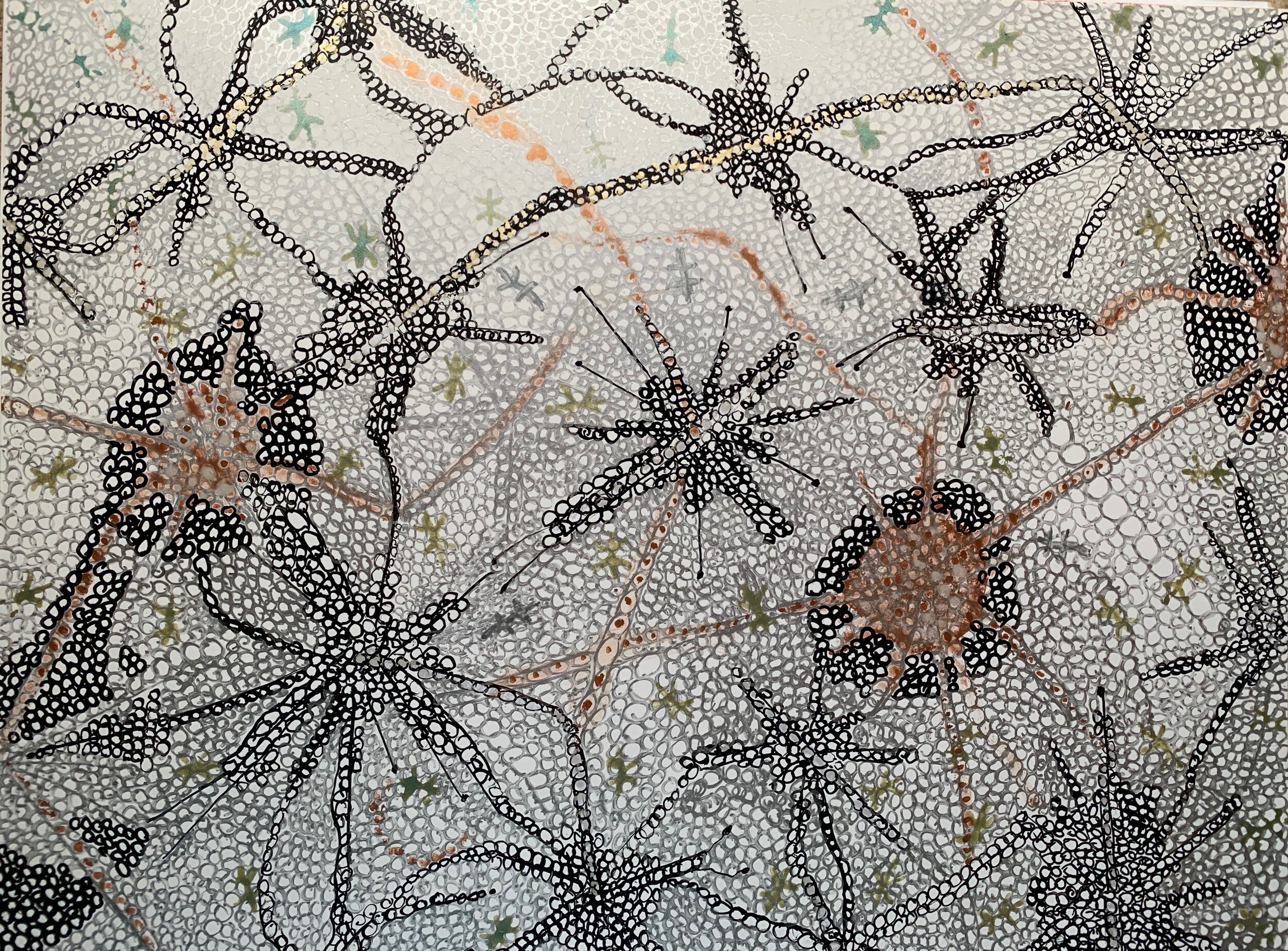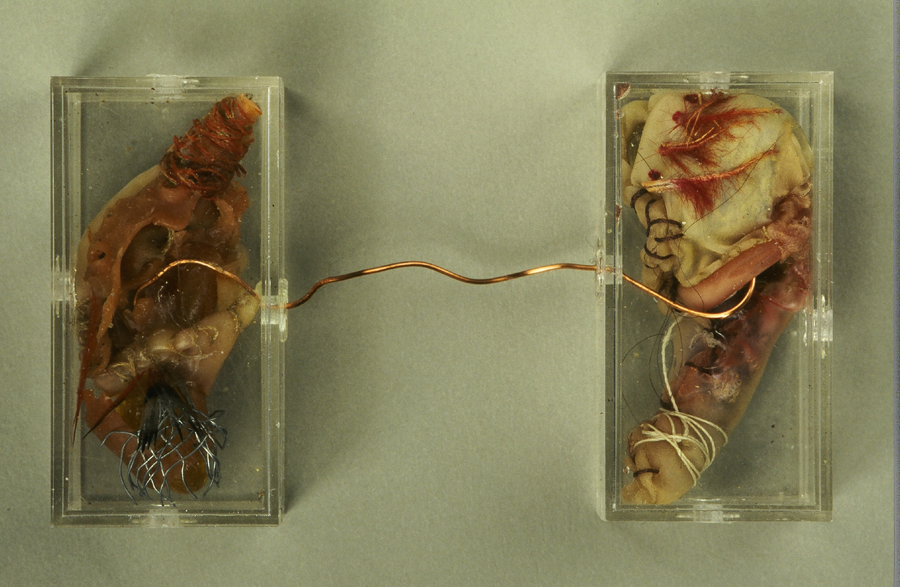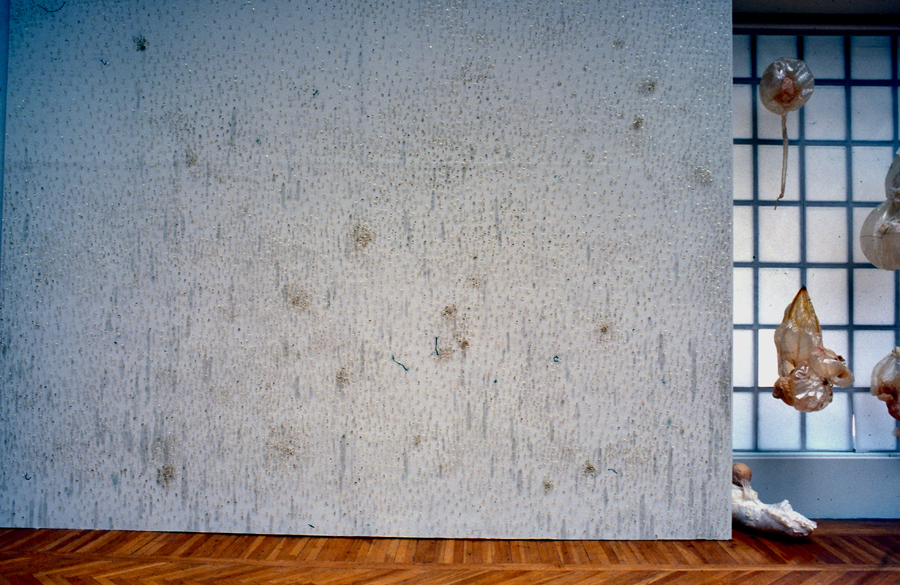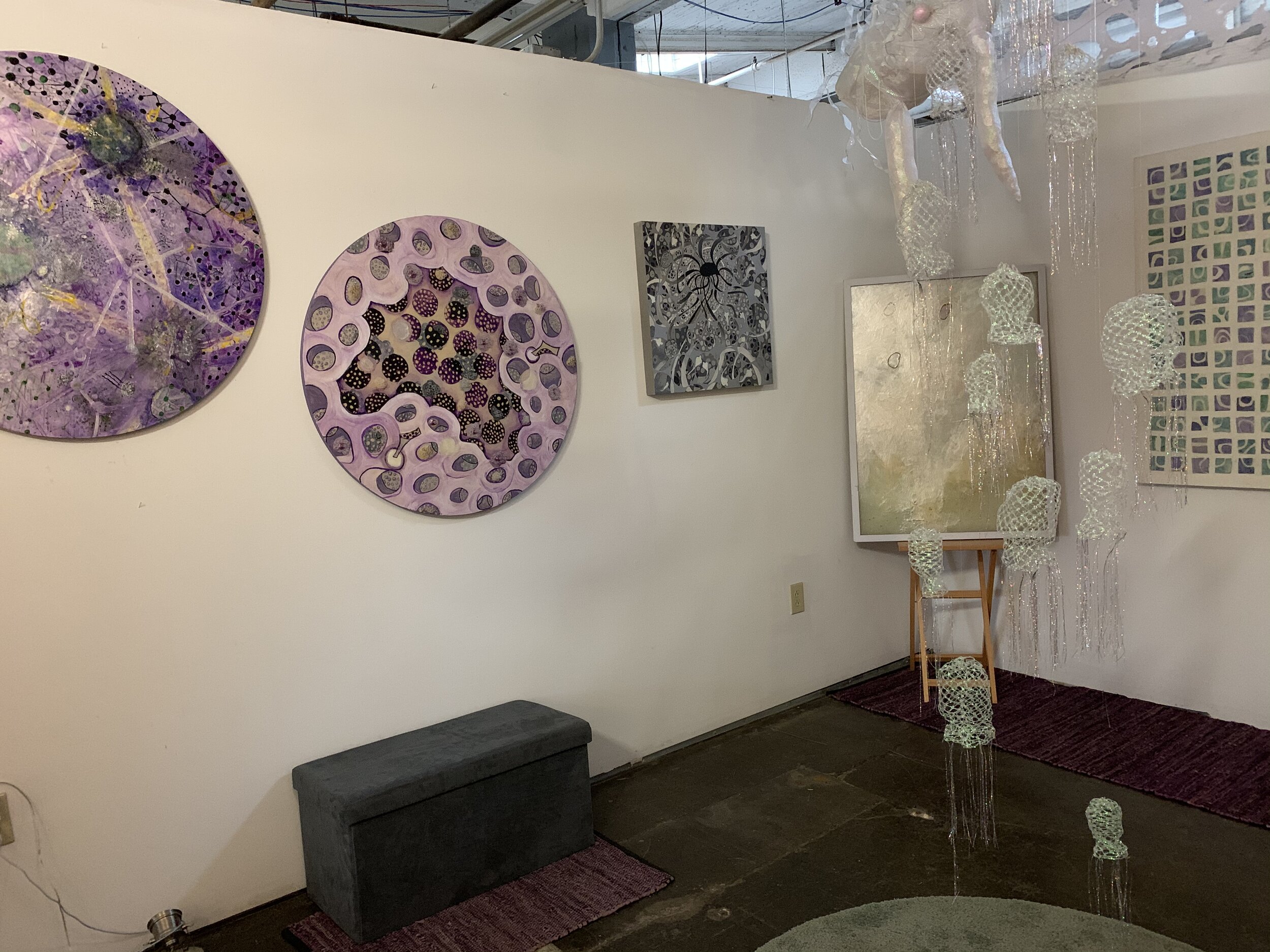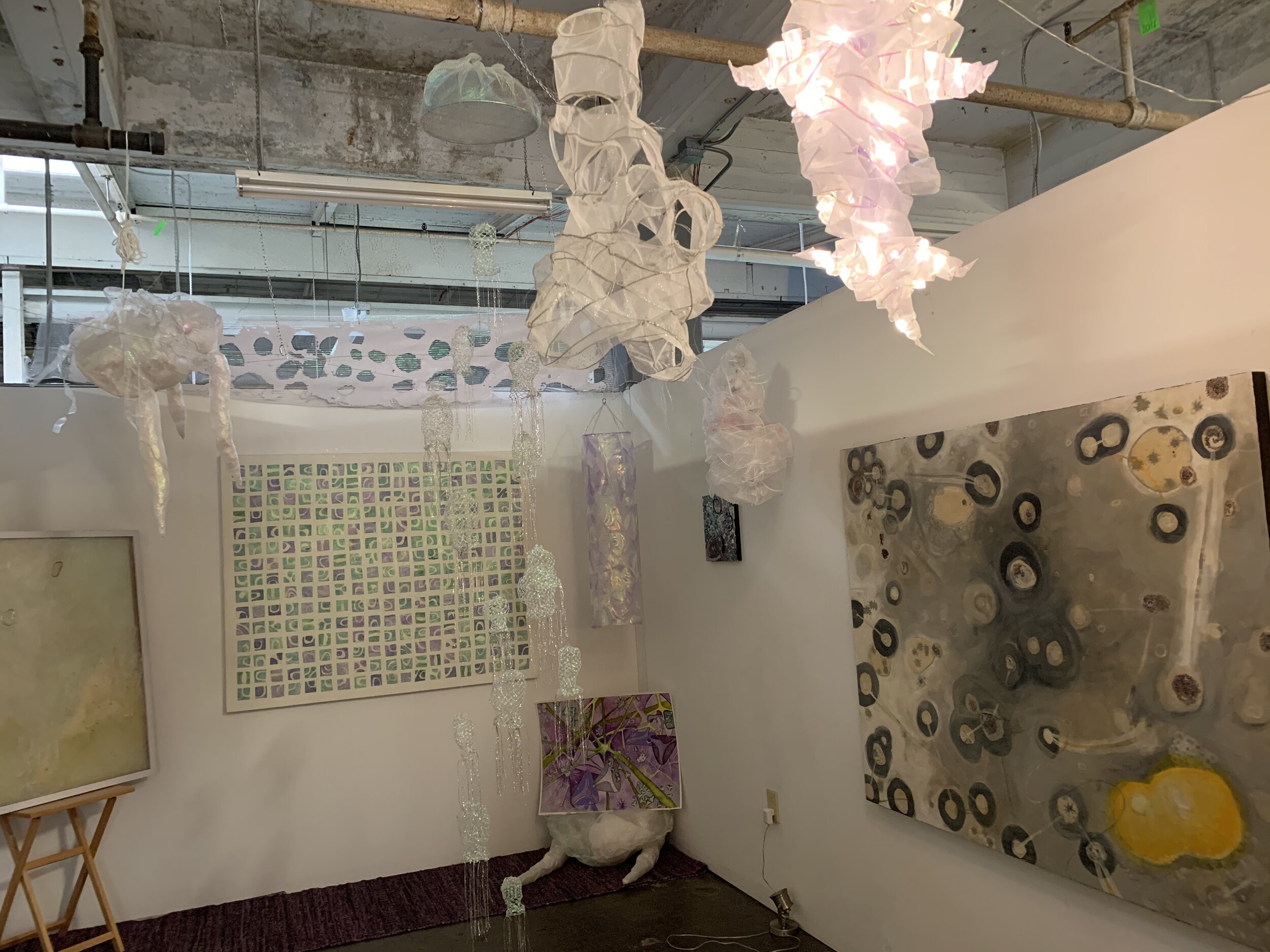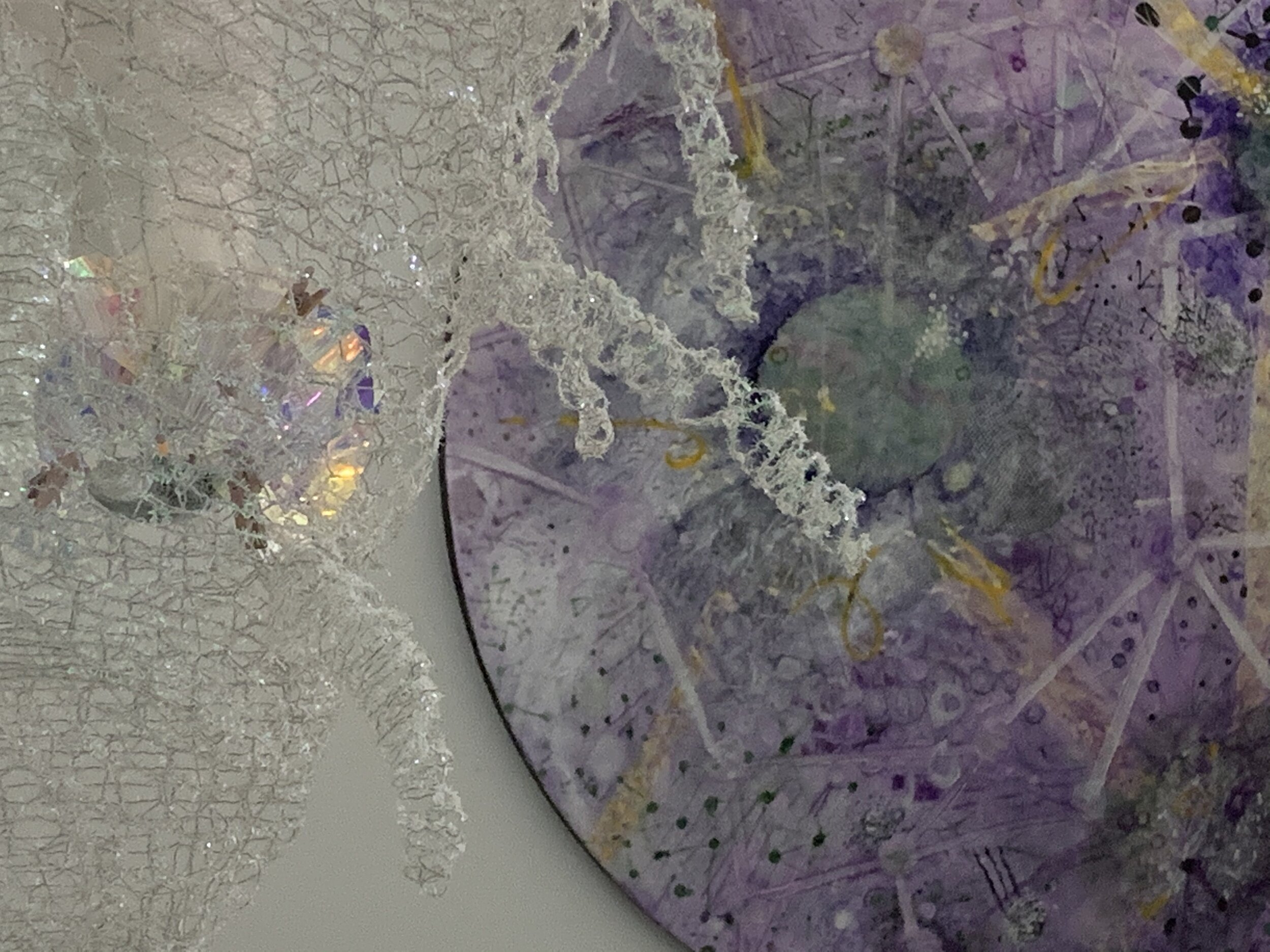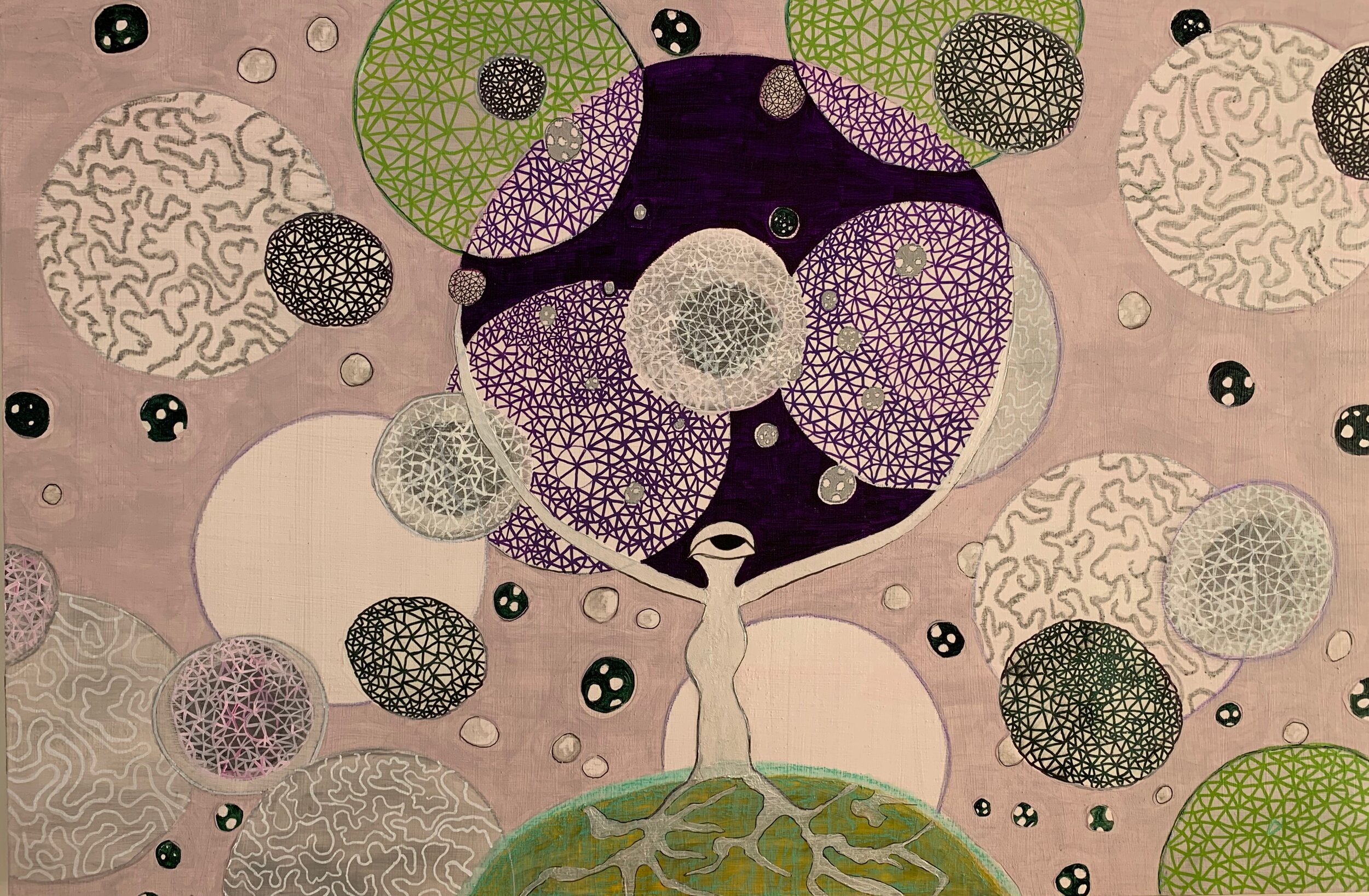Artist Interview - Cee
During this time of isolation and the stay-home order of 2020, many of us are searching for a connection with others. Forced distance from each other has sparked conversations about relationships, community, and togetherness. For Cee, this quest is nothing new; she’s been exploring the oneness of humanity her entire life.
Even at an early age Cee (who goes by the single name) noticed much of the world seemed unhappy and she wanted to begin a search for the reason. She recalls, “I felt like an alien in this world.” Her mom told stories of young Cee staring through the sudsy window of the washing machine, watching clothes going around. Cee explains that she loved the way the colors blended together. It’s an easy image to visualize after seeing how she has always used fibers, form, and color to express harmony.
Cee began making art when she was a child, and even then it was thoughtful and profound. According to Cee, “It’s all about ‘What is life?’ and how life is interconnected; one thing is connected to the next thing and the next thing.” Part of this intrigue began through exposure to religion, as Cee grew up in the Catholic Church but was questioning the ideologies as early as 13. That year, she wrote a formal essay about why she would no longer practice Catholicism.
Later Cee would take up meditation, and began visiting ashrams while spending timing with teachers to learn about the network of humanity. This exploration led her through all types of wisdom teachings until she found answers within Advaita Vedanta. Advaita Vedanta is a Hindu philosophy which discusses the consciousness of the world, teaching that we all are made of the same consciousness. Instead of “me” and the ego, there is oneness. Finally, she found teachings to help answer her question, “Why am I here?”.
This shared consciousness quickly translates into Cee’s art. In earlier works, she begins utilizing the iconic eye that she would later adopt as her logo. Beyond the more obvious connection to her name, the eye in her works and design is meant to express the inner-eye and be a symbol of how you see the world.
Who Creates
Acrylic on shaped aluminum, 4’ x 3’, 1989
Cee’s art changed in the 90’s, which she believes was spurred by deaths in her own family and grappling with the question “What happens when we die?” She wanted to know where the line was between the physical and the spiritual self, and what does that line look like. Her portfolio from this time is a beautiful record of this search. Her materials are heavier and the colors are darker, in contrast to what she creates now. Using warm hues, latex, and even pig intestines-something she said dries beautifully but is no longer worth the smell-Cee creates forms that remind us of bodies. The work is visceral, and feels like the first step into understanding our connection to one another.
Also influencing her work at this time was Cee’s job as a spiritual caregiver to people in hospice. She spent a lot of time close to Death, and learned from others experiencing it. Her role as a hospice spiritual caregiver is to help a person on their journey at the end of life. Cee saw firsthand that during this experience, people seemed to want more; maybe more answers, more time, or more life. They often aren’t in a great place, and many people have regrets or feel fearful for the end, but Cee was there to help them find some peace.
The role of a spiritual caregiver is no easy feat, and it’s exhausting in emotional and physical ways. Her move to Maui was prompted by the desire to “be around blues and greens”. She moved to a jungle farm in order to heal. Cee lived in Maui for 14 years, where she was able to further her consciousness of unity. She describes feeling the interconnectedness in a physical way while farming and composting; “One thing turns into another thing. I knew it spiritually, but it makes physical sense when you are planting. Things are feeding each other and eating each other.”
While living in Maui, Cee learned about Aloha ʻĀina, which she describes as the connection to the land. She would learn through working with elders and hearing their stories. As she dug into the dirt, she simultaneously listened to their history, connecting to the world around her in physical and spiritual ways. Cee took this learning of connectivity and furthered her body of artwork explaining, “Color and pattern are my language to express this interactivity.”
Continuing towards her goal of connecting with others, Cee moved into a studio at 400 West Rich in 2019. She wanted to have the company of other artists as well as a space for her work to reach others. Cee said, “Columbus has been really welcoming to me as an artist. I wanted to share in that.” Her studio is a working studio, ever evolving. Cee considers herself both a painter and a sculptor, but she describes her studio as a painting itself. She has been working on transforming the entirety of her space into its own installation. With one “piece” of art, rather than a series of individual paintings, she wants to immerse the viewer in a feeling. Even if you don’t enter the studio installation, you’ll be able to view it as a whole from the window in the hall. The window provides an entirely different perspective, aptly sitting under a sign of her iconic eye logo.
The window to Cee’s studio
As she manipulates light with her sculpture, Cee wants people to feel “some type of brightness and consciousness” while being enveloped in lightness. She makes this easy for the viewer, creating iridescent objects full of lavenders and mints, sparkling and shining. The colors and materials express the light Cee has found, as they hang or float through various means of installations. She likens this work to her state of consciousness, and describes the feeling as blissful.
There is a relatable feeling while looking at Cee’s full portfolio, as the works evolve and act as snapshots of times in her life, but the same journey is clear throughout. She offers some final advice: “Searching is suffering. Searching is looking for something that’s not there. If you spend your life searching, you’re never at peace.”
Head to Cee’s website or her instagram to see her portfolio of work, and read more about Cee’s philosophy and spirituality in her books, The Myth of Seeing and The Way of Knowledge. Visit her installation in Studio 148 at 400 West Rich, opening October 9, 2020.
